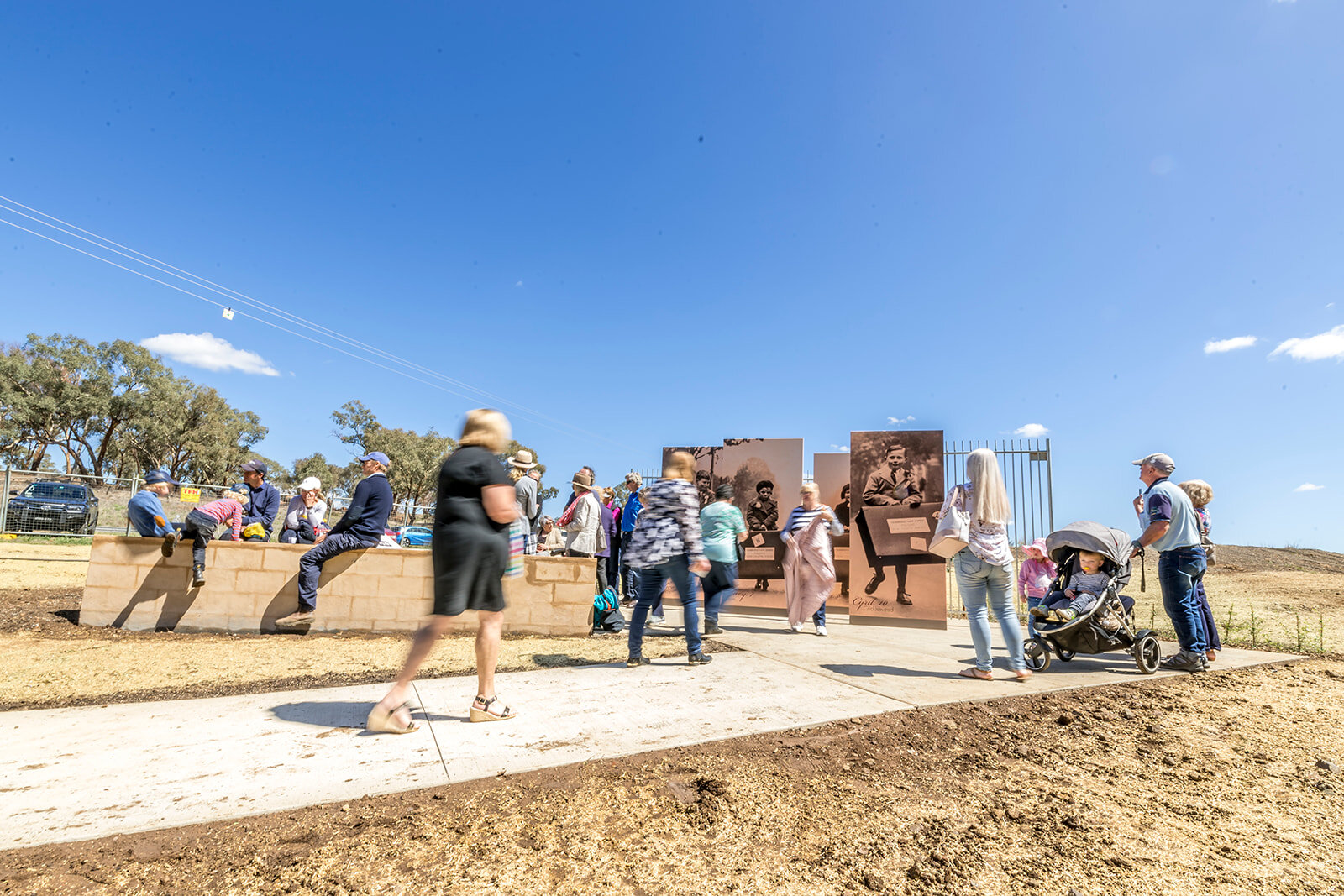Fairbridge Children's Park tells a story
Fairbridge Children's Park in Molong, New South Wales marks the legacy of one of Britain's largest child migration schemes.
Between 1938 and 1974 nearly 1000 youngsters from as young as four, some orphaned, others taken from poverty-stricken families, were shipped across the world to Fairbridge Farm in Wiradjuri Country between Orange and Dubbo.
The design conveys a strong story of the human experience of the Fairbridge children’s journey.
What they were promised was care, education and a life of opportunity in a new country. But the reality was very different. Boys were trained solely for life as farm labourers, the girls for service as domestic aids. What ensued for most was a childhood of loneliness, hard work, deprivation, physical punishment, and often sexual abuse.
The testimony of those children and Government inquiries in Australia and the United Kingdom led to compensation and formal apologies to the generations of innocents who had suffered. But the “children” wanted a permanent memorial to their Fairbridge family - the only most had known - to mark their survival against the odds.
The park is a place of beauty and tranquility – an antidote to the hardship and isolation of its former residents.
Landscape architects Clouston Associates were entrusted with the job of designing that park, which was intended to re-tell the ‘kids’ story.
“It was to be both a means of sharing their childhood experience with others, but for themselves an antidote to memories of personal loneliness, suffering and abuse,” Clouston says. “What was required was a place to be and a park to experience - not a memorial garden to admire or another sculpture to view.”
The park is the culmination of years of work by the former children with help from the Orange and Molong communities and government funding.
An old roadside rest stop on the Mitchell Highway was the ideal site - it was close to the Farm and offered views to old Fairbridge village buildings. More significantly, Molong Creek flowing along its northern edge had been a favourite swimming hole and bushland refuge for the children.
Their story is told in four phases, expressed through four precincts within the 2 hectare park. The whole is linked along a broad pedestrian spine paralleling the winding creek which relates the timeline of the Fairbridge program.
A timeline trail tells the four stages of the children's lives from leaving England to living at Fairbridge and then their lives afterwards.
Each precinct follows the sequence of the children’s journey. Starting with the conflicted beginnings through the migration scheme in Britain, the Origins installation faces promisingly to the farm site opposite; their Passage across the world follows in a precinct contrasting adventure and disorientation in a grassland maze. Passing through replica gates to Fairbridge the Farm Life precinct tells of the living conditions and daily routine the children endured; then, features of their lives after Fairbridge are reflected in the Turn Out precinct’s activities and memorials.
At every level, the park design was constrained and disciplined by its creek flood plain location, limited budget and the Old Fairbridgians Association’s desire for a spare, authentic character, Clouston says.
The park is now seen as a tourist destination.
The landform received minimal reshaping and existing vegetation was largely retained. Low-cost construction solutions such as hydroseeding to manage erosion -as well as adding an evolutionary dimension to the park -were employed as part of the creative approach.
Importantly, the creation of Fairbridge Children’s Park has been through community effort and will remain so in management, says Clouston.
Since completion, the Park has made a positive impression on the pride and self-identity of Old Fairbridgians, and the appreciation of their saga by a very wide audience, the studio says.
“It has become a place of learning, reflection and reconciliation, inviting former residents and future generations to reappraise the significance of this overlooked chapter of Australia’s history.
“And the park is already evolving, adding depth and detail from the Fairbridge story and new attractions or events hosted by the local community – ensuring its future as a meaningful, living place that the ‘kids’ themselves desired.”
Many former resident’s attended the park’s opening.
That’s demonstrated by initiatives like the Molong Country Women’s Association (CWA) use of the Park to hold their regular markets, or uncommon care such as that from Carbone Council’s maintenance manager who with great pride and precision mows the grass waves to create the Passage maze.
The park compliments the existing tourism offerings in Molong, which includes a collection of Fairbridge memorabilia and interpretation of the program at the local museum. The site’s prominent location on the Mitchell Highway also offers travellers a rest stop of unique character to break their road journey.
Fairbridge Children’s Park elevates an almost forgotten place to its rightful role in history, Clouston says.
“It employs landscape to conserve and reveal a site of special cultural significance to the kids who grew up there. Its a place rich in history, a living legacy that conserves and enhances a site of great cultural significance to Molong and Australia.”






